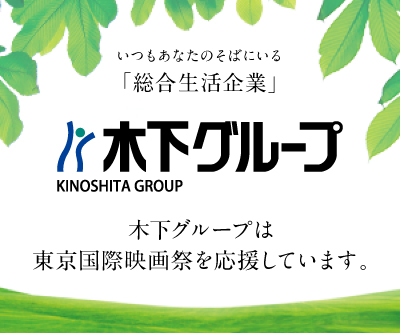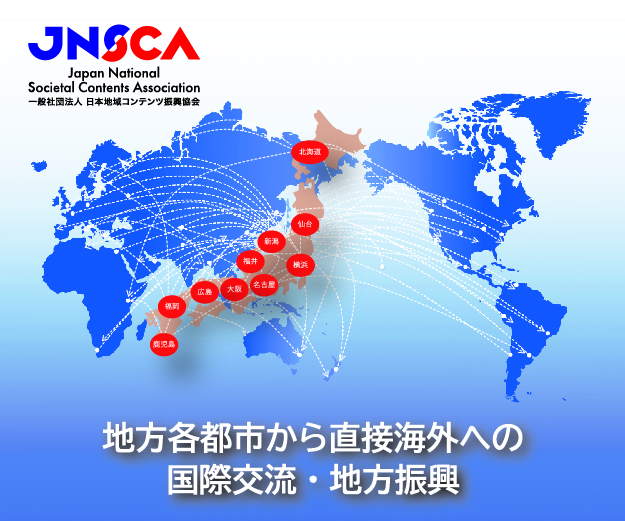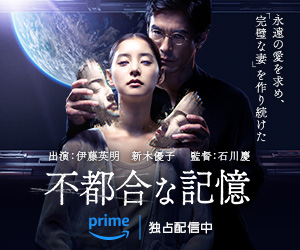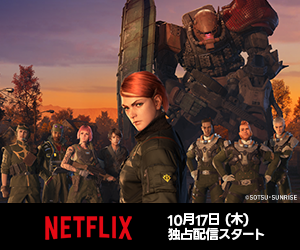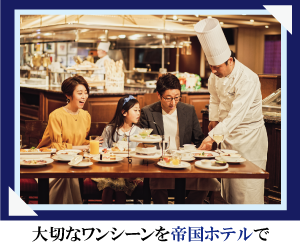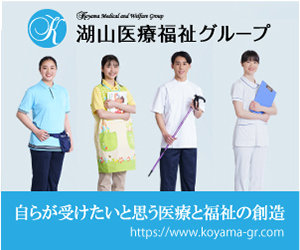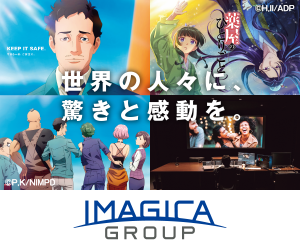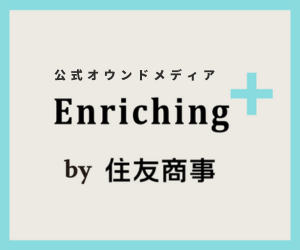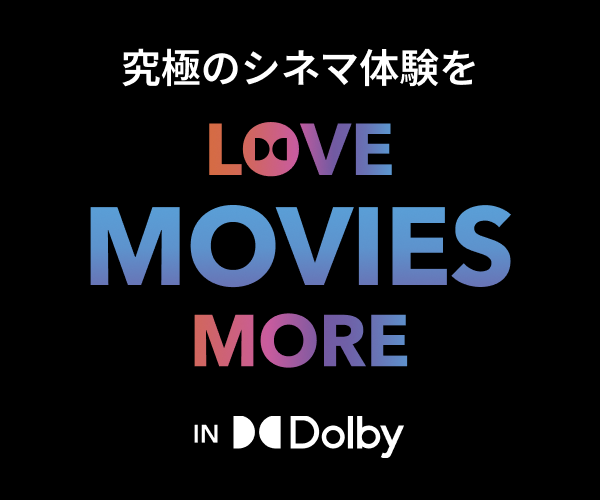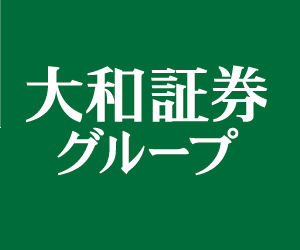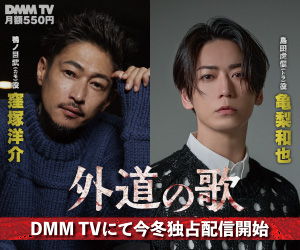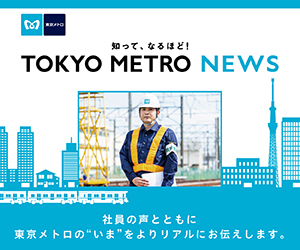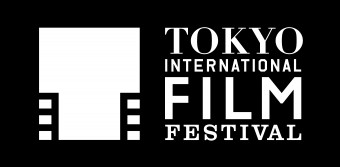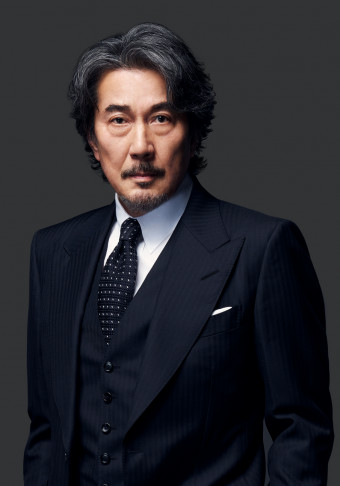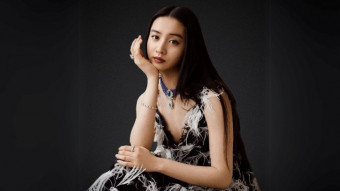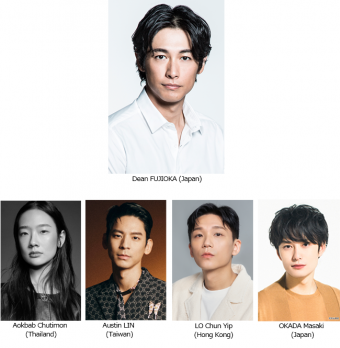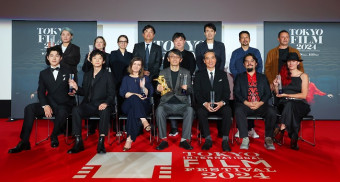
As many of Japan’s acclaimed animated film directors enter later life, a new generation of directors has emerged, coming not only from animation schools and studios, but from unconventional creative backgrounds producing short films and music videos. Three emerging directors discussed such backgrounds and the challenges of making animated feature films at The New Era of Japanese Animation symposium held on November 1 during the 37th Tokyo International Film Festival.
Directors POPREQ (A Few Moments of Cheers), Tsukahara Shigeyoshi (Kurayukaba) and Yasuda Gensho (Make a Girl) — all of whom are showing their films at the festival — joined TIFF’s Animation Programming Advisor Fujitsu Ryota for a lively discussion of their diverse professional backgrounds and experiences on their first feature-length animated films.
All three directors began by relating how they had benefitted from the availability of a variety of digital media tools and platforms. Tsukahara was interested in animation from an early age, he said, making clay animation in elementary school and short animation works on his personal computer in junior and high school, but switched to Flash in college because “it was the only tool available.” He also was impacted by Fumiko’s Confession, a short animation independently produced and distributed on YouTube in 2009.
Yasuda was a self-described “NEET” (not in education, employment, or training) and wanted to be an oil painter at one point. But through a desire to show something to “as many people around the world as possible,” he decided to use his computer graphics skills to make short films on Blender, which he then uploaded to YouTube. One of these short films, Make Love, became the prototype that led to a job offer to make his first feature-length animated film, Make a Girl.
POPREQ was inspired to become an animator by Hatsune Miku music videos he saw on Niconico (a video-streaming platform) in high school and gravitated toward Adobe After Effects to mimic their look and feel. With [deputy director] Ohajiki and [art director / character designer] Magotsuki, both of whom he met in college, he made several music videos which he also uploaded to the Niconico platform.
When asked why they made the switch to feature-length films after so much success producing short films and music videos online, each gave different answers.
Tsukahara said he loved film since a kid and knew that there are things only feature films can do. “With a short film, you can only introduce a single concept,” he explained. “But you can create detours in a feature film or focus on a much longer character drama.”
Yasuda’s and POPREQ’s forays into features, on the other hand, were more a result of outside demands than long-held desires. Yasuda, who wrote a novel and went to scenario-writing school, said he never thought about making a feature-length film before the popularity of Make a Girl. POPREQ had been making three-minute music videos before he received an offer to make nine two-minute anime episodes. That offer was changed to 18 episodes, and then to make it all connect into a 40-minute story, and then again to expand it to 60 minutes.
Switching so quickly from short to feature-length films is no easy task. Tsukahara said it took him 10 years to release the film, though most of this time was spent being rejected by financers before he found success through a crowdfunding campaign. While he initially struggled relinquishing control of the majority of the filmmaking duties, he gradually grew more comfortable delegating certain tasks to others once they had an idea of what they were good at. This allowed him to “free up brain space for other things.”
Yasuda, who said the most challenging part of feature-length filmmaking was making something so much bigger with a limited budget and resources (just three modelers and four animators), said that there is an added pressure to making a film: “People are giving you money in advance to complete your project, so you do feel pressure that they won’t be satisfied with the same material you’ve provided for free on social media.”
POPREQ seemed satisfied with his project, but also not certain of where to go next: “I made this film thinking I wouldn’t be able to make another film, so I said everything I wanted to say in it. I’m now searching for the next thing I want to say.”
While all three directors agreed that the trend of indie animators turning “pro” (i.e. making commercial feature-length films) will continue, none were sanguine about it becoming a common industry practice. Tsukahara and Yasuda seemed more optimistic, citing the growing numbers of crowdfunding campaigns and producers sifting through social media for filmmakers to join their projects. POPREQ countered that while it is now possible to make a feature with a small group of people and better digital tools, it’s still very difficult to create and even more difficult to get noticed.
Fujitsu said perhaps the best way to think of such crowdfunding projects are as animation “incubators” for talented animators who want to graduate from short films or music videos, but not make the jump or commitment to a 90-minute project. He concluded that with the increased in streaming and UGC (user-generated content) platforms available today, we might see a positive development of more “middle-length” features in-between the current binary of multi-episode anime series and feature-length animated films.
Anime Symposium
The New Era of Japanese Animation
Guests: POPREQ (Director), Tsukahara Shigeyoshi (Director), Yasuda Gensho (Director)











